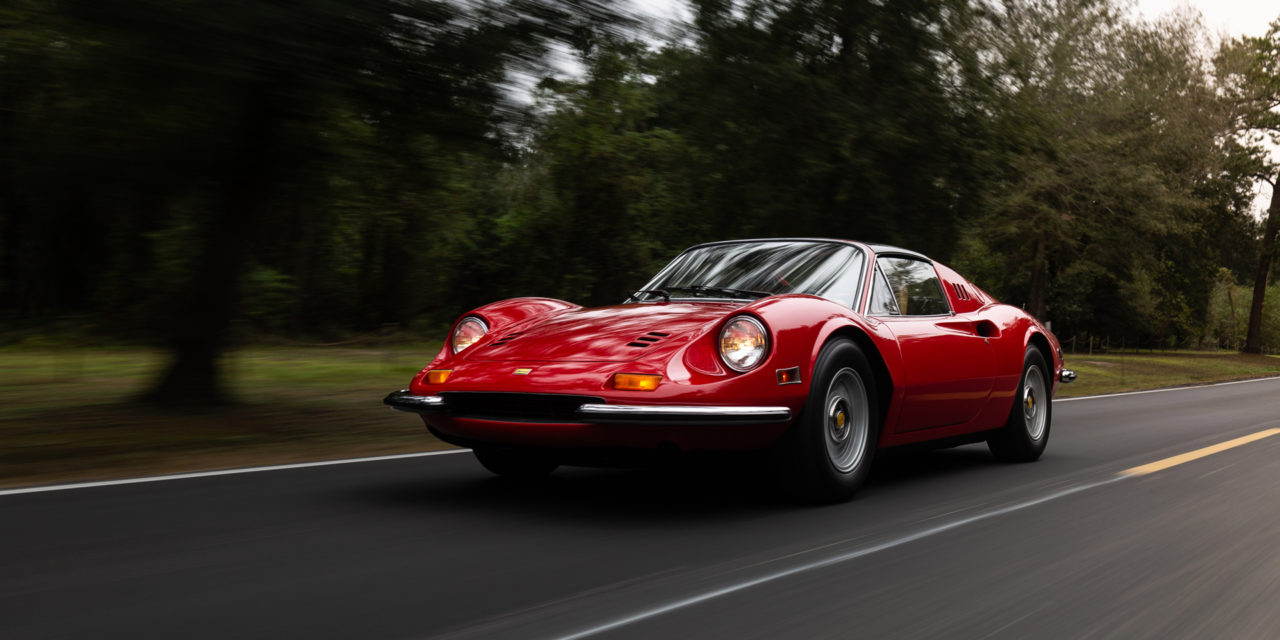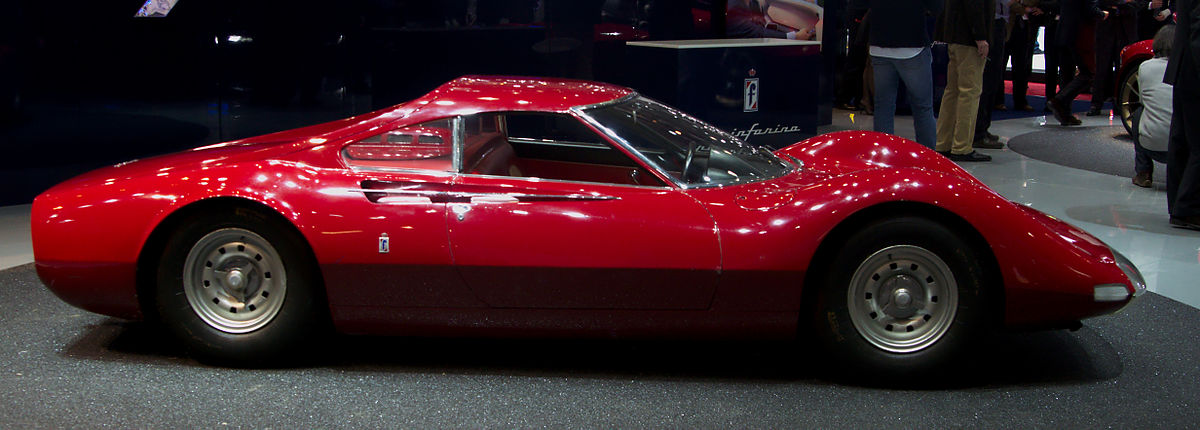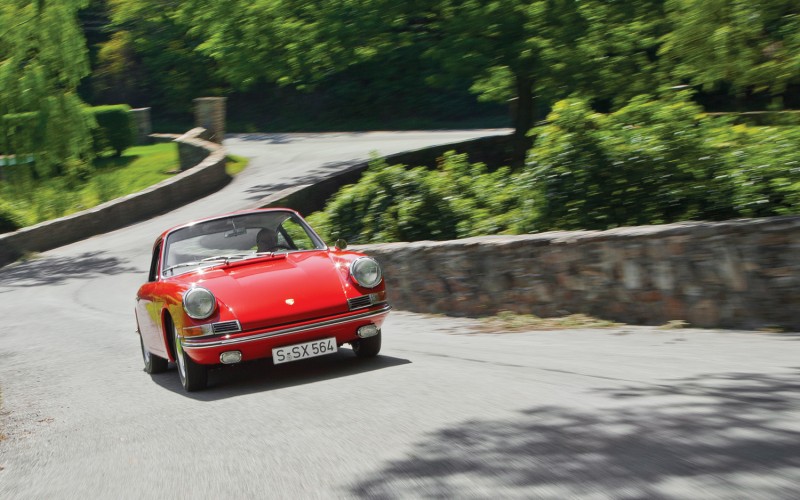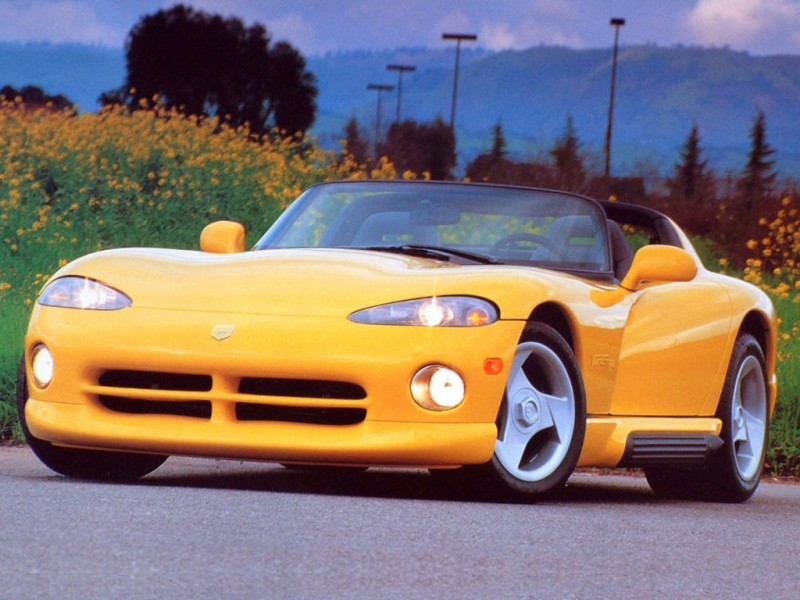It is difficult today to imagine Ferrari sports cars without mid-engine layouts since it has long become an integral part of their modern performance moniker. However, there was a time when fearful skepticism by the company’s progenitor kept the capabilities of this arrangement out of public hands. Instead, a wholly separate company was created to evaluate the concept and, more importantly, safely distance Ferrari’s image should they fail.
Certainly, Ferrari needs no introduction to establish its commitment toward perfecting performance – their name is mythical. This is why it is comically ironic that what is now considered the ‘ideal’ sports car engine arrangement (mid-mounted) was initially met with harsh resistance by company founder, Enzo Ferrari. In fact, so fierce was his opposition that he chose to build an entire sub-brand to trial test the capabilities of the public with this design rather than risk his core brand. Back then, he could not have known that ultimately his most prolific cars in the future would nearly all be based around this performance-minded packaging.
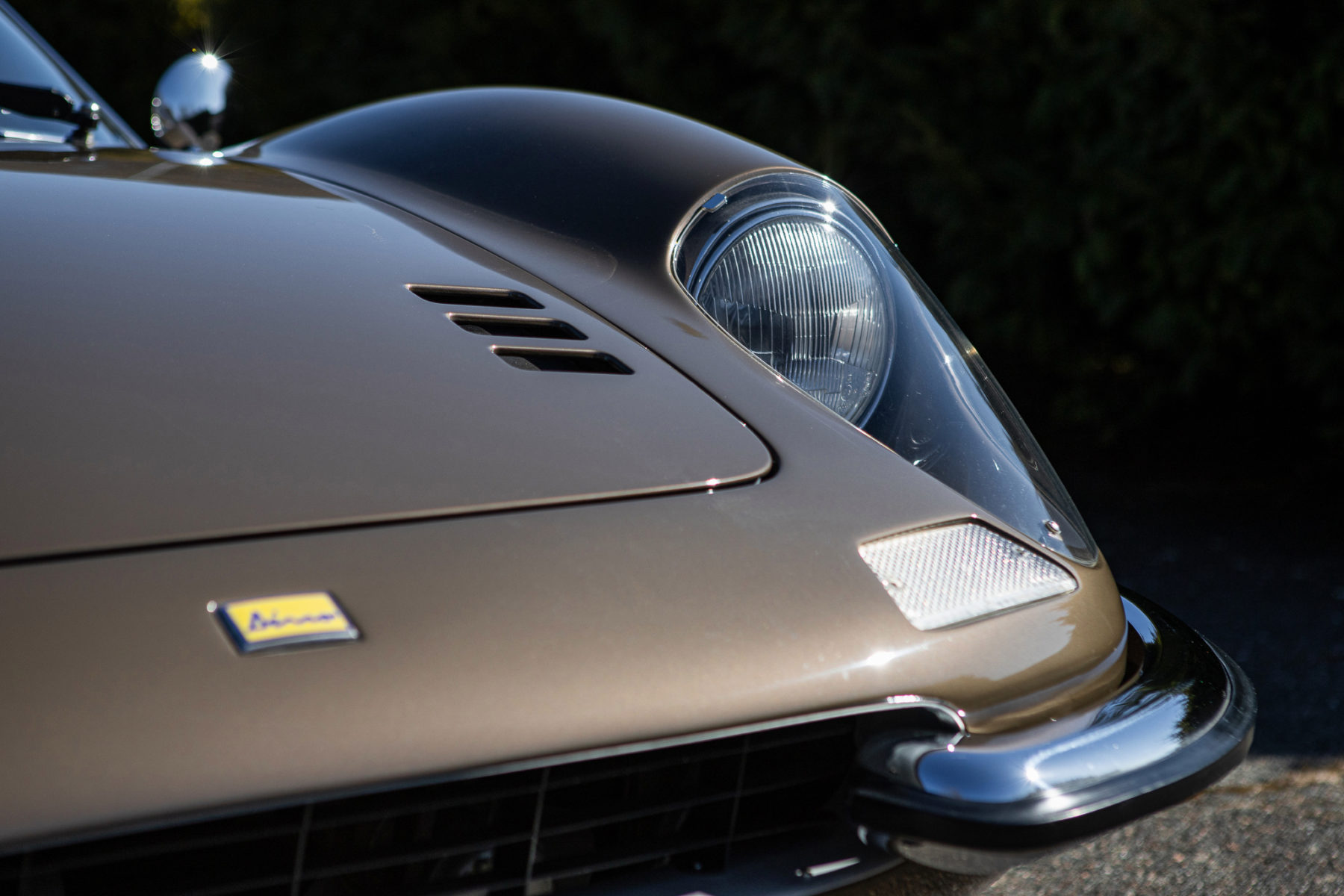
Born From Necessity
In the racing world, 1967 brought about a dramatic change in regulations for teams competing in Formula 2. The revision implemented governance to make the series a bit more like its motorsport cousin, the World SportsCar Championship. As such, Formula 2 would now require entries to use motors directly derived from a production vehicle. For Ferrari, this was problematic since the series was, much like their Formula 1 participation, instrumental to the brand’s philosophy and image. Moreover, for such a small company, whose vehicle and motor output were already strained due to the hand-crafted construction of each car, the rule beget serious logistical issues for Enzo.
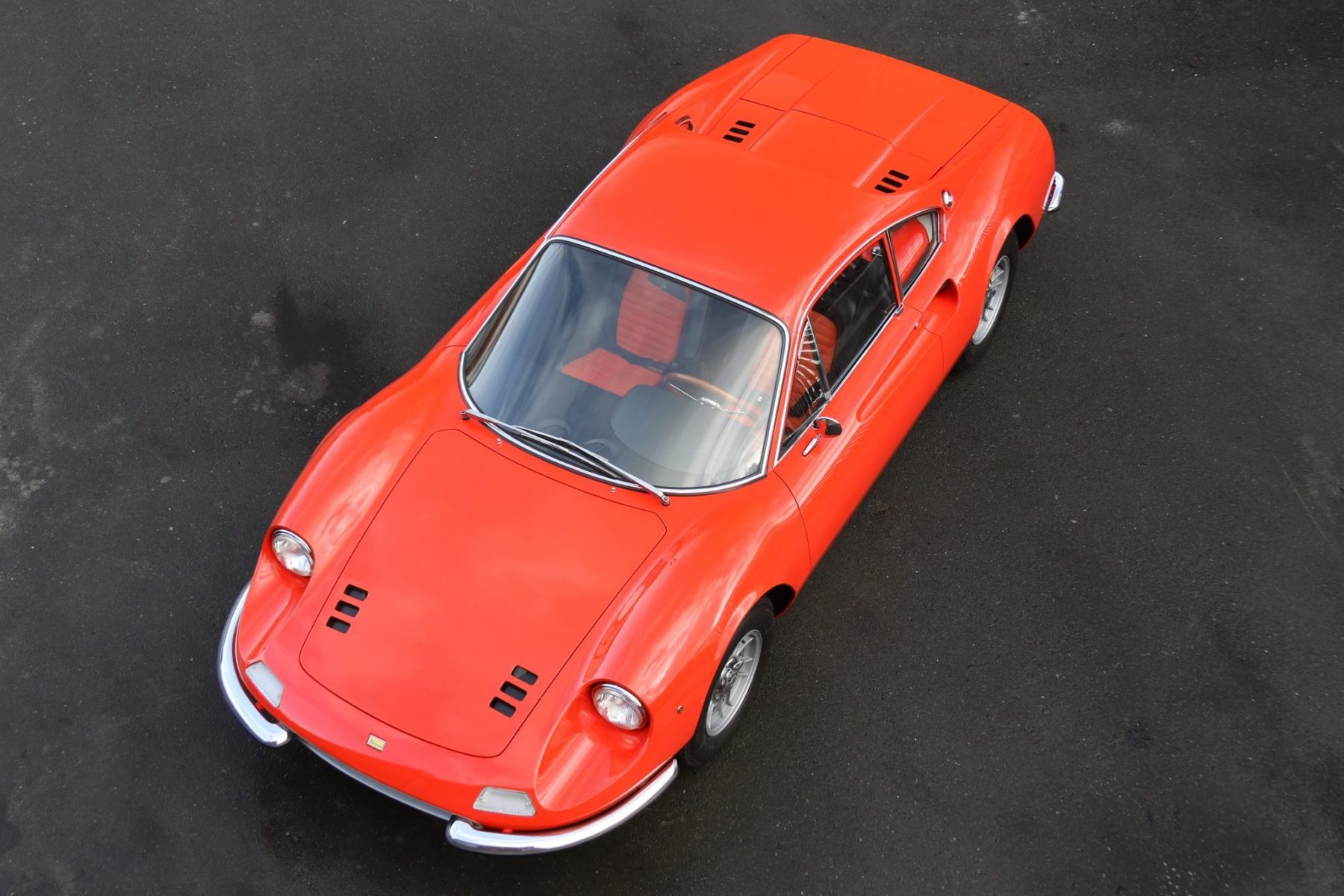
Cr. Bring a Trailer
As daunting as this was, Formula 2’s recent decree was not the only dilemma Ferrari was now facing. While it is true that mid-engine cars were still novel, there was one specific company selling them which was creating significant contention for Enzo – their Sant’Agata arch-rival, Lamborghini. See in 1966, Lamborghini’s equipoise V12 Miura became the hottest Italian item on the market. Every day that outrageously seductive sports car was out grabbing headlines uncontested created additional pressure for Ferrari to address their rival’s mid-engine raging bull.
A Potential Publicity Nightmare
Until the Dino project, all production Ferrari’s sold to the public had been front-engined. Although not inclusive, even the majority of their racing cars still possessed the same configuration. In modern mid-engined cars, situating the motor midship endows the car with well-balanced handling at the limits. However, in the early years of development, they were prone to becoming suddenly erratic at the boundaries of operation. This was especially true when mated together with high-performance motors. So in the eyes of Enzo, front-engined sports cars with high horsepower were deemed safer for his clientele.

As a motorsport icon himself, Enzo knew this risk. He was intimidated by the prospect of having his company’s name attached to a car that could be a deathtrap. His fear was not undeserved either since mid-engined sports cars had only been made available for purchase four years prior by Matra. As such, there was very little information to go on regarding public perception and their driving capabilities. Ferrari wisely knew they needed to be extremely cautious making such a large gamble with their namesake.
After deliberating with Turin-based Fiat, Ferrari arrived at a viable solution for overcoming their obstacles. Fiat, with larger production facilities, would produce potent V6 motors bearing racing designs similar to those that Enzo’s son, Dino, had been working on before his death. They would then supply them to Ferrari for use in their new model as well as for use in a front-engined Fiat model which would satisfy homologation requirements since these models would also be branded as Dinos. This also effectively separated both Ferrari and Fiat from scrutiny should any issues arise with the handling or controllability of the car.
The Dino Concept
Along with trial-testing the engine layout, the lower cost of the Dino brand provided an opportunity for consumers to get early entry into the Ferrari brand. Buyers could now afford to purchase Ferrari engineering and Pininfarina designs at a more affordable price point. With the cost of Ferrari’s current lineup well-exceeding most sports cars of the era, it was a tactical decision for cultivating a flock of future buyers.
While in effect the concept did not create a counter against Lamborghini’s more powerful and expensive Miura, the first Dinos safely brought Ferrari into the fold. In fact, the Dino was to be the direct competitor to Porsche’s newest sports car, the 911. Though still fledgling, the 911 represented the best in affordable European sports cars at the time, making it the perfect market competitor. It was a decision that smartly allowed Ferrari to penetrate both market segments.
The first full-model concept was penned by Sergio Pininfarina and was prominently displayed at the Paris Salon Motor Show in 1965. His drawings illustrated a rakish, mid-engined concept car which when brought to life for the event was referred to as the ‘Dino 206 GT Speciale’. The corresponding design study borrowed heavily from racing models, mainly pulling cues from the Ferrari 412P and 330 P4 Le Man’s cars. Some of the borrowed ideas were enclosed headlights, a low sloping hood, and an aerodynamically integrated Kamm tail. Many of these cues endowed upon the prototype (shown at the Turin Motor Show in 1966 and again (more finalized) in 1967) would show up as sultry stylings on the production car.
From 206 To 246
With the entirety of the 206GT decided upon in 1967, the Dino was available for purchase the following year. The 206 GT came standard with a transversely mounted 2.0-liter V6, from which the 206 designations were derived. Although Ferrari designers would go out of their way to make it clear that it was no Ferrari, so far as to redesign chassis numbers specifically for Dino’s, the car inherited considerable amounts of technology from their parent company.

Ferrari used longitudinal primary tubing and cross tubing to support and brace their road car chassis, and the 2,280mm Dino platform was no different. This lightweight, yet durable design aided the 206 GT greatly in handling and rigidity. Aiding this was a rather unique all-aluminum body construction, which no Ferrari model at the time utilized. Other trickle-down tech included ventilated disc brakes, coil springs, fully independent suspension geometry, hydraulic shock absorbers, and front and rear anti-sway bars.
Even with all of that impressive technology, the powerplant was far more spectacular. Three Weber 40 carburetors sat atop the transversely mounted 2.0-liter motor which cranked out a considerable 180 horsepower. This was fed into an all-synchromesh 5-speed transmission, which was good enough for handling a top speed of 146 mph (235 km/h)!
However, this motor only lasted for one year of production. By 1969, it was quickly replaced by a larger 2.4 liter V6 constructed of cast iron instead of aluminum. Along with this displacement increase, was a nomenclature shift to the 246 GT that corresponded to the size difference.
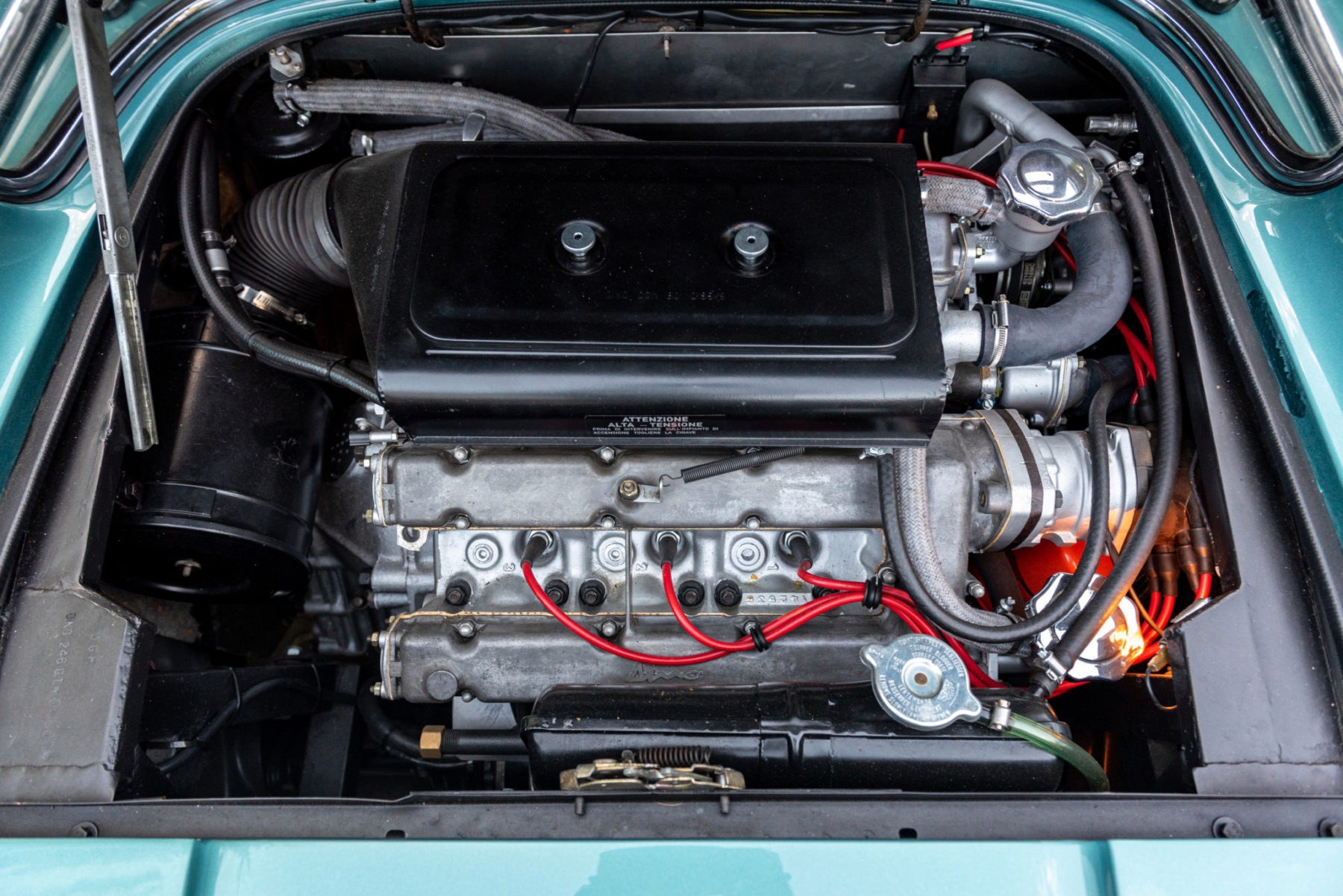
Although almost identical in every way to the 206 GT, the best way (and one of the few ways) to distinguish them is by a body-colored filler door on the driver-side C-pillar that replaced the 206 GT’s chrome cap. While the styling remained virtually the same, the wheelbase grew by 60mm.
More importantly, that displacement bump pushed the power up a good 15 horsepower, now at 195 (in European specifications). While not too far off from what the Porsche 911S was making, the Dino, with better aerodynamics, was to be the faster car and only marginally more expensive – Ferrari was pleased.
Death of the Dinos
While only 150 206 GT were made in 1968, from 1969 until 1973, the 246 GT proved exceedingly popular among buyers. A replacement, the 308 GT4 arrived that final year featuring a V8 engine, 2+2 seating, and a body design by Bertone. It would later be rebadged as a Ferrari in 1976 – signaling not only the close of the Dino brand but the beginning of the mid-mounted V8 Ferrari models.
Today, the Dino 206/246 GT are among the most highly prized and beautifully crafted “Ferrari” to ever be produced. With distinct lineage, excellent performance, and stunning looks, the car that Enzo feared would destroy his reputation now trades at higher values than some authentic prancing ponies. Was it sheepish for Ferrari to carefully wade into revolutionary engineering waters by building a whole new sub-brand? Perhaps.
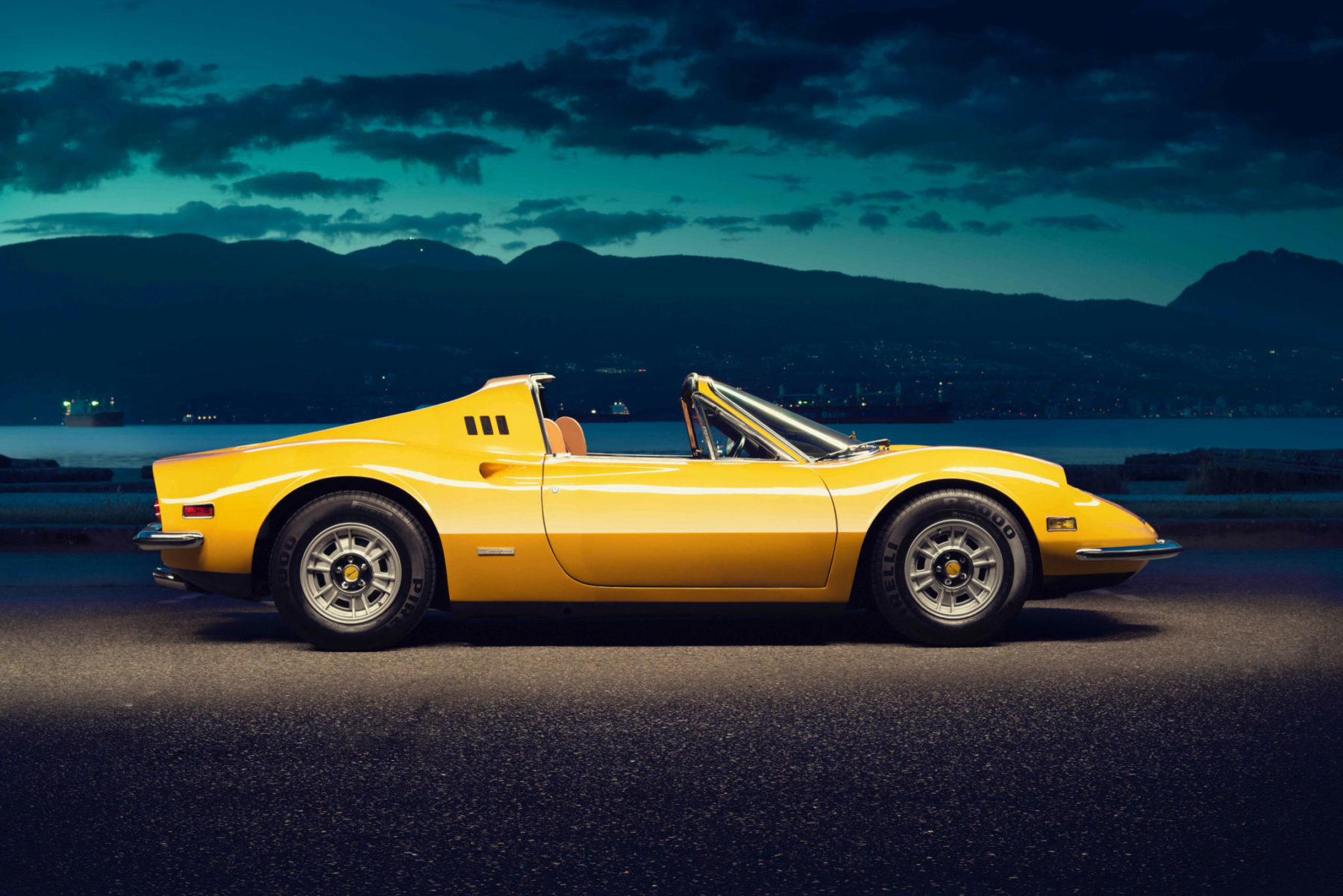
Nevertheless, the Dino 206GT and 246GT served as the crucial stepping stones allowing Ferrari to comfortably enter into the new era. Married to an alluring shape and with a sufficiently potent powerplant, the Dino GTs suffered only due to identity issues arising from their surreptitious start. They are, in all forms, as perfect as any purebred Ferrari. Historically speaking, Dinos serve as the harbingers to most modern-day Ferrari models. They were the cautious venture that conceived a total transformation. To that, we owe the 206 GT and the men who pressured Enzo Ferrari into building it a solemn salute.
Specifications
- Years – 1968 – 1973
- Layout – Mid-engine
- Drive – RWD
- Body Style – Coupe, Targa
- Seating – Two
- Motor – V6
- Displacement – 2.0 liters / 2.4 liters
- Power (hp) – 180 / 195
- Torque (lbs-ft) – 138
- Transmission – 5-speed manual
- Wheelbase – 89.8 in (2280 mm )
- Weight – 1984 lbs (900 kg)
- 0-60 mph (100 km/h) – 6.7 seconds
- Top Speed – 146 mph (236 kph)

